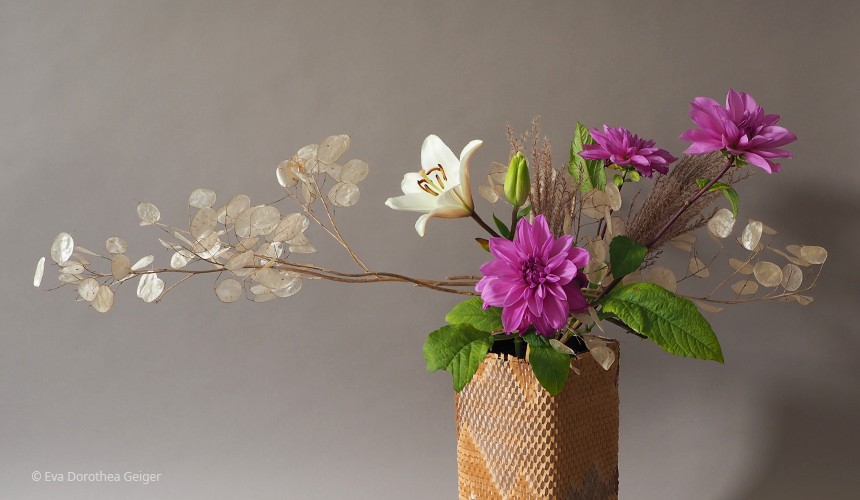
The Tsukimi, or moon viewing festival, is a long-standing tradition in Japan that celebrates the beauty of the autumn moon, usually the full moon in September. It is the time when the moon appears at its fullest and most radiant in the autumn sky. Tsukimi (literally translated: looking at the moon) traditionally follows the lunar calendar and takes place on the fifteenth day of the eighth month to celebrate the bountiful harvest and express gratitude for a successful season. This year, the night of the harvest moon jap. jugoya' was September 29.

The tradition of moon gazing in Japan dates back to the Heian period (794 to 1185) and was originally inspired by the Chinese Moon Festival, which celebrates the autumn full moon and the harvest. The Japanese elite of the time, especially aristocrats and courtiers, gathered for special moon gazing festivals held on boats or on the shores of lakes where the moon was reflected particularly impressively in the water. Over the centuries, this tradition spread to the general population and became an integral part of the Japanese calendar.
Tsukimi means taking time on a clear autumn night to marvel at the full moon in all its splendor. For a moment, the world seems to stand still and you realize the quiet grandeur of the universe. Just as the moon rises calmly above the landscape, we too can occasionally rise above the things that weigh us down in our everyday lives.
During the Tsukimi festival, people in Japan traditionally lay out offerings such as dango (rice dumplings), taro and seasonal fruits to honor the moon, and often arrange silver grass (susuki) to give thanks for a bountiful harvest.
Suzuki gras, also known in Japan as Susuki or scientifically Miscanthus sinensis, is a highly valued plant that takes on a very special significance in Japanese culture, especially in the fall. Often referred to as Japanese silver grass, it is known for its gently swaying, silvery, shimmering stems that dance in the autumn breeze and create an almost hypnotic, meditative atmosphere. It stands for transience and beauty. Similar to the cherry blossom in spring, suzuki grass symbolizes the ephemeral nature of life, as the delicate stalks with their fluffy tips quickly fade and are eventually scattered by the wind. This association with the fleeting nature of life is deeply rooted in Japanese aesthetics, which emphasizes “transient beauty” mono no aware.

Suzuki grass is therefore not only found in nature, but is also used in art and poetry.
In haikus (Japanese poetry form), it conveys the quiet beauty and solitude of moon gazing, in the style of Japanese wabi-sabi, the aesthetics of the imperfect and ephemeral.
Through silvery grass,
the moon gazes gently at the earth,
quietly the night rises.
Eva D. Geiger
How lonely the boat
on the lake in the evening light,
the autumn moon rises.
Matsuo Bashō
Suzuki grass embodies strength through delicacy and permanence through transience - a quiet but powerful message. It reminds us that even the seemingly smallest things can have great inner strength and beauty. Especially at a time when everything is fast-paced, Suzuki grass offers a welcome reminder to respect the natural cycles and consciously experience the stillness of autumn days.
In ikebana, we can celebrate Tsukimi with different variations. The flower panicles of Miscanthus sinensis in various stages are very suitable, but only the leaves can also be used, which bring a nice movement to the arrangement. The flower spikes of the different varieties can be either silvery, reddish or golden and the leaf shapes are either narrow or slightly wider. In summer, they are green or, as with Miscanthus sinensis Zebrinus, yellow-green, cross-banded and overhanging and turn yellowish in autumn.

